Hymen While the debut solo CD by Volker Kahl of German duo Beefcake runs thegamut of electronic styles, the album is a unified, enjoyable listen.Through 60 minutes, styles move from breakcore to sweeping ambientsoundscapes to melodic electronica, but by naming the tracks "Place1"through "Place11" he adheres to the concept of travel. Thejuxtaposition of moods from track to track makes Placesfeel like an actual journey. "Place1" recalls a city environment, withits quick tempo invoking the fast-paced nature of urban life. "Place2"features cut-up voices and rapid-fire beats, and contrasts sharply withthe orchestral "Place3," during which an eerie narrator asks to "listenfor my voice. I will tell you what to do". With this track Kattoocreates a sweeping, epic sound that resembles a landscape seen whilesoaring high above. The combination of excellent source material andskillful production make "Place4" a stand-out track. Here he pits heavymetal guitar riffs against intricately programmed live drumming, withswirling ambience lingering in the background. "Place5" is a melloweraffair, and recalls Kahl's work with Beefcake in that it featuressoulful, albeit manipulated, vocals. The sedate, melodic quality ofthis track balances the heavy beat-oriented "Place6" which follows it.The only part of the set that loses me is the closing seven minute"Place11," which consists solely of a man speaking in German. If he hadmade this kind of piece as a link track it would have been lessdisruptive to the flow of the album. Since I don't understand German,the importance of the text is lost on me, although at one point he sayssomething about President Roosevelt. The addition of a remix of"Place7" by Flaque after this monologue is a welcome return to music,with tinkly beats and synthesizer washes interspersed with recordingsof a roomful of people talking. Although the landscape photographs onthe sleeve are appropriate for the theme, it is surprising that theusually inventive graphic designer Salt has used a layout that soclosely resembles that of the Azure Skies CD from 2001, which alsodepicts landscapes on its cover.
While the debut solo CD by Volker Kahl of German duo Beefcake runs thegamut of electronic styles, the album is a unified, enjoyable listen.Through 60 minutes, styles move from breakcore to sweeping ambientsoundscapes to melodic electronica, but by naming the tracks "Place1"through "Place11" he adheres to the concept of travel. Thejuxtaposition of moods from track to track makes Placesfeel like an actual journey. "Place1" recalls a city environment, withits quick tempo invoking the fast-paced nature of urban life. "Place2"features cut-up voices and rapid-fire beats, and contrasts sharply withthe orchestral "Place3," during which an eerie narrator asks to "listenfor my voice. I will tell you what to do". With this track Kattoocreates a sweeping, epic sound that resembles a landscape seen whilesoaring high above. The combination of excellent source material andskillful production make "Place4" a stand-out track. Here he pits heavymetal guitar riffs against intricately programmed live drumming, withswirling ambience lingering in the background. "Place5" is a melloweraffair, and recalls Kahl's work with Beefcake in that it featuressoulful, albeit manipulated, vocals. The sedate, melodic quality ofthis track balances the heavy beat-oriented "Place6" which follows it.The only part of the set that loses me is the closing seven minute"Place11," which consists solely of a man speaking in German. If he hadmade this kind of piece as a link track it would have been lessdisruptive to the flow of the album. Since I don't understand German,the importance of the text is lost on me, although at one point he sayssomething about President Roosevelt. The addition of a remix of"Place7" by Flaque after this monologue is a welcome return to music,with tinkly beats and synthesizer washes interspersed with recordingsof a roomful of people talking. Although the landscape photographs onthe sleeve are appropriate for the theme, it is surprising that theusually inventive graphic designer Salt has used a layout that soclosely resembles that of the Azure Skies CD from 2001, which alsodepicts landscapes on its cover.
samples:


 Aubrey Anderson takes things back to basics on his latest album for anew label, after some critical upset following his sophomore LP. Sadly,even though the methods are the same as his debut, the disappointmentcontinues on par with its follow-up, as the songs and vocalperformances rarely escape radio-friendly safe pop territory. Andersonis no doubt a talented musician, arranger, and producer, exhibiting agreat deal of self-motivation and a strong work ethic. He's even shownsparks of breaking out with a massive and timeless record, either inDifference Engine or on his own. The sparks have never caught into theraging inferno and they merely pop and fizzle on these songs. Maybeit's the Jack Johnson-like photos that make up the digipak packaging,but there's a general feeling of "check out this new artist who has alot of emotional things to say" that seeps out of every pore. It's likethe anxiety to try out some bold flavors in a cereal, only to open thebox and find that nearly half is air. The opening track starts thistrend: following two verses and roughly three minutes of music, "TheLong Hot July" continues for another minute and a half of the samerefrain and gentle almost-moan. It's unneeded, as though Andersonthought the track wasn't long enough, so just dragged it out to filltime. His vocal delivery is very much that of the sensitivesinger-songwriter mold, and the melodies are all bittersweet happiness,as though it didn't work out as planned but a certain rolling with thepunches will be a growth experience. Not that it's all a waste, ascertain songs — "San Francisco" or "Panic and Doubt" — have moments ofgrand adventure, like chilling harmonies and squelched guitars or oddinstrumentation. For the most part, though, the lyrics are pedestrianand to be avoided (talks of Tarantino matinees and being around afriend's house at sixteen are not terribly interesting); and the songsveer into the bland and formulaic, like the title track, or even worse"Summer Time." This is touted as the "true voice" of Aubrey Anderson,but I doubt that's true. With the hints he's provided in the past, I'dthink his true voice would be far more sensational. If the best momentsof this CD were expounded upon, perhaps that's what will come out.
Aubrey Anderson takes things back to basics on his latest album for anew label, after some critical upset following his sophomore LP. Sadly,even though the methods are the same as his debut, the disappointmentcontinues on par with its follow-up, as the songs and vocalperformances rarely escape radio-friendly safe pop territory. Andersonis no doubt a talented musician, arranger, and producer, exhibiting agreat deal of self-motivation and a strong work ethic. He's even shownsparks of breaking out with a massive and timeless record, either inDifference Engine or on his own. The sparks have never caught into theraging inferno and they merely pop and fizzle on these songs. Maybeit's the Jack Johnson-like photos that make up the digipak packaging,but there's a general feeling of "check out this new artist who has alot of emotional things to say" that seeps out of every pore. It's likethe anxiety to try out some bold flavors in a cereal, only to open thebox and find that nearly half is air. The opening track starts thistrend: following two verses and roughly three minutes of music, "TheLong Hot July" continues for another minute and a half of the samerefrain and gentle almost-moan. It's unneeded, as though Andersonthought the track wasn't long enough, so just dragged it out to filltime. His vocal delivery is very much that of the sensitivesinger-songwriter mold, and the melodies are all bittersweet happiness,as though it didn't work out as planned but a certain rolling with thepunches will be a growth experience. Not that it's all a waste, ascertain songs — "San Francisco" or "Panic and Doubt" — have moments ofgrand adventure, like chilling harmonies and squelched guitars or oddinstrumentation. For the most part, though, the lyrics are pedestrianand to be avoided (talks of Tarantino matinees and being around afriend's house at sixteen are not terribly interesting); and the songsveer into the bland and formulaic, like the title track, or even worse"Summer Time." This is touted as the "true voice" of Aubrey Anderson,but I doubt that's true. With the hints he's provided in the past, I'dthink his true voice would be far more sensational. If the best momentsof this CD were expounded upon, perhaps that's what will come out. For a recording artist, the release of their first solo album—afternumerous guest appearances or group releases—ranks high on the list ofrights of passage, up there with other crucial, life changing or lifeaffirming events: a bar mitzvah, loss of virginity, or your firstkidney stone. Unfortunately for veteran hip hopper Blueprint (Columbus,OH native Albert Shepard), Chamber Musicis more like the latter than any other milestones. It's labored andpainful, there's no idea what caused it, and it's relieving when over.It's especially frustrating and disappointing when considering thatShepard, a former computer programmer and systems analyst, has receivednearly universal acclaim on the underground circuit as an MC, mostnotably for his Soul Position project. With RJD2's unique productionstyle mated to Blueprint's rhyming style—cerebral and challenging oneminute, flowing raunchy and handing out disses the next—Soul Positiongarnered nothing but well-deserved respect for the duo. On Chamber MusicBlueprint takes a complete 180, choosing to abandon the mic for theproducer's studio. While it's not completely unfamiliar territory—hehas produced tracks for Illogic and others before—it's not his strongsuit, a fact that becomes painfully obvious deep into Chamber Music'spoorly conceived sixty minutes. The obligatory guest MC appearancesinclude Aesop Rock, Illogic, and Cannibal Ox's Vast Aire all takingturns, and Blueprint himself isn't totally silent, providing a fewverses on "Mr Hyde." Eight instrumental tracks remain, proving to besimply too much time for Blueprint to fill with anything of interest oreven quality. Most of the record's sound can best be described as thebackground music to a hip-hop themed Spooky World. Blueprint createsdark, barren four part sonic landscapes that meander without reallygetting anywhere, making the listener almost yearn for a party anthemor a holier than thou indictment of the record industry (almost).Usually such sins aren't enough to sink a track, but Blueprint commitssuicide with his sample selection. He of all people must be aware thehigh standard to which loop diggers are held, so it's inexcusable thenfor him to sample what sounds like B-list session musicians or to makean entire track out of a played Richard Pryor routine. The Pryor track,"Hot Sex," is actually one of the album's better tracks, but it'shardly impressive to hear little more than background music for a30-year old joke. That being said, Chamber Music is not withoutits merits. However, they come frustratingly late, as it's not untilthe eleventh track, "Sacrifice," where a mournful piano skittersthrough a blissfully dismal montage of drums, occasionally comforted bya softly wailing flute. It is pretty, poignant, and with a strong bassline, kick, and snare it's actually stompin'. It's too little too late,as on the whole Chamber Music feels like a very dedicated,motivated and intelligent man sat down and did his best with a limitedcollection of run-of-the-mill samples and the latest copy of Pro-Tools.It may work sometimes, but Chamber Music is cold, uninspiringand at times, simply boring. To sit patiently through the entire recordis a challenge; hip hop anathema. It has none of the soft and welcomingorganic familiarity of a Shadow tune, the controlled anarchy of aPrefuse track or the dusty crate-dug accidental genius of a Madlibbeat. Worst of all, Blueprint does show flashes of talent, but they arescattered throughout the album, and diluted by mediocrity so much sothat almost too hard to find to be worthwhile. He may yet produce agem, but with his solo debut Blueprint has put his name on an unhappilyaverage album.
For a recording artist, the release of their first solo album—afternumerous guest appearances or group releases—ranks high on the list ofrights of passage, up there with other crucial, life changing or lifeaffirming events: a bar mitzvah, loss of virginity, or your firstkidney stone. Unfortunately for veteran hip hopper Blueprint (Columbus,OH native Albert Shepard), Chamber Musicis more like the latter than any other milestones. It's labored andpainful, there's no idea what caused it, and it's relieving when over.It's especially frustrating and disappointing when considering thatShepard, a former computer programmer and systems analyst, has receivednearly universal acclaim on the underground circuit as an MC, mostnotably for his Soul Position project. With RJD2's unique productionstyle mated to Blueprint's rhyming style—cerebral and challenging oneminute, flowing raunchy and handing out disses the next—Soul Positiongarnered nothing but well-deserved respect for the duo. On Chamber MusicBlueprint takes a complete 180, choosing to abandon the mic for theproducer's studio. While it's not completely unfamiliar territory—hehas produced tracks for Illogic and others before—it's not his strongsuit, a fact that becomes painfully obvious deep into Chamber Music'spoorly conceived sixty minutes. The obligatory guest MC appearancesinclude Aesop Rock, Illogic, and Cannibal Ox's Vast Aire all takingturns, and Blueprint himself isn't totally silent, providing a fewverses on "Mr Hyde." Eight instrumental tracks remain, proving to besimply too much time for Blueprint to fill with anything of interest oreven quality. Most of the record's sound can best be described as thebackground music to a hip-hop themed Spooky World. Blueprint createsdark, barren four part sonic landscapes that meander without reallygetting anywhere, making the listener almost yearn for a party anthemor a holier than thou indictment of the record industry (almost).Usually such sins aren't enough to sink a track, but Blueprint commitssuicide with his sample selection. He of all people must be aware thehigh standard to which loop diggers are held, so it's inexcusable thenfor him to sample what sounds like B-list session musicians or to makean entire track out of a played Richard Pryor routine. The Pryor track,"Hot Sex," is actually one of the album's better tracks, but it'shardly impressive to hear little more than background music for a30-year old joke. That being said, Chamber Music is not withoutits merits. However, they come frustratingly late, as it's not untilthe eleventh track, "Sacrifice," where a mournful piano skittersthrough a blissfully dismal montage of drums, occasionally comforted bya softly wailing flute. It is pretty, poignant, and with a strong bassline, kick, and snare it's actually stompin'. It's too little too late,as on the whole Chamber Music feels like a very dedicated,motivated and intelligent man sat down and did his best with a limitedcollection of run-of-the-mill samples and the latest copy of Pro-Tools.It may work sometimes, but Chamber Music is cold, uninspiringand at times, simply boring. To sit patiently through the entire recordis a challenge; hip hop anathema. It has none of the soft and welcomingorganic familiarity of a Shadow tune, the controlled anarchy of aPrefuse track or the dusty crate-dug accidental genius of a Madlibbeat. Worst of all, Blueprint does show flashes of talent, but they arescattered throughout the album, and diluted by mediocrity so much sothat almost too hard to find to be worthwhile. He may yet produce agem, but with his solo debut Blueprint has put his name on an unhappilyaverage album. This brief, three-song EP is being released as a spacer to tide fansover until the new Antony and the Johnsons full-length album I Am A Bird Nowis released February of next year. New material from NYC's premieretorch-song singing androgyne is long overdue, the artist not havingreleased any new material since 2002's I Fell In Love With A Dead BoyEP, and no full-length since his superlative 1999 debut on Durtro. Inthese intervening years, Antony's cult of adoration has grownconsiderably, with established NYC artists Lou Reed and his wife LaurieAnderson promoting the artist, playing a number of shows together.Antony has made guest vocal appearances on two of Lou Reed's recentalbums, and he contributes vocals to campy queer troubadour RufusWainwright's most recent album Want Two. It seems that success has agreed with Antony, as the songs and lyrics on The Lakeevidence a decidedly more positive outlook than the depressing songsuite of his first album. According to Antony, "The Horror Has Gone,""That terror was not fright/but a tremulous delight," and "I feel thatheat/And I know it's love." There are no more rivers of sorrow orHitlers in his heart, I suppose. Even despite my usual preference formelancholy, The Lake EP is a terrific little taster, all threesongs showcasing the singer/songwriter/arranger at the very height ofhis craft. The title track will be recognizable to those who have heardthe Current 93/Antony split Live at St. Olave's Church EP, a moving adaptation of Edgar Allan Poe's mysterious lyric poem. I'm not sure if it's a coincidence that Lou Reed's The Raven,a dire concept album about the decadent author, coincided with Antony'sfascination with Poe, but either way it's a beautiful song, though Iprefer slightly the simpler arrangement and vocal style of the earlierlive recording. "Fistful of Love" is the EP's centerpiece: an upbeat,jazzy number about the fear of admitting you're in love in someone. LouReed does a guest vocal spot on the EP, contributing some terse spokenlyrics and electric guitar. It's one of Antony's busiest arrangements,with a full brass section and a distinct rock vibe, but he pulls it offbrilliantly. The final track is the brief, delicate "The Horror HasGone," in which Antony celebrates the passing of a deep depression,playing the piano, accompanied by Julia Kent's beautiful cello. I'vebeen enjoying this EP thoroughly, and it affirms what many peoplealready know: Antony's voice is one of the most amazingly expressiveinstruments around. Those who don't get it, never will; those who loveit, will always come back for more.
This brief, three-song EP is being released as a spacer to tide fansover until the new Antony and the Johnsons full-length album I Am A Bird Nowis released February of next year. New material from NYC's premieretorch-song singing androgyne is long overdue, the artist not havingreleased any new material since 2002's I Fell In Love With A Dead BoyEP, and no full-length since his superlative 1999 debut on Durtro. Inthese intervening years, Antony's cult of adoration has grownconsiderably, with established NYC artists Lou Reed and his wife LaurieAnderson promoting the artist, playing a number of shows together.Antony has made guest vocal appearances on two of Lou Reed's recentalbums, and he contributes vocals to campy queer troubadour RufusWainwright's most recent album Want Two. It seems that success has agreed with Antony, as the songs and lyrics on The Lakeevidence a decidedly more positive outlook than the depressing songsuite of his first album. According to Antony, "The Horror Has Gone,""That terror was not fright/but a tremulous delight," and "I feel thatheat/And I know it's love." There are no more rivers of sorrow orHitlers in his heart, I suppose. Even despite my usual preference formelancholy, The Lake EP is a terrific little taster, all threesongs showcasing the singer/songwriter/arranger at the very height ofhis craft. The title track will be recognizable to those who have heardthe Current 93/Antony split Live at St. Olave's Church EP, a moving adaptation of Edgar Allan Poe's mysterious lyric poem. I'm not sure if it's a coincidence that Lou Reed's The Raven,a dire concept album about the decadent author, coincided with Antony'sfascination with Poe, but either way it's a beautiful song, though Iprefer slightly the simpler arrangement and vocal style of the earlierlive recording. "Fistful of Love" is the EP's centerpiece: an upbeat,jazzy number about the fear of admitting you're in love in someone. LouReed does a guest vocal spot on the EP, contributing some terse spokenlyrics and electric guitar. It's one of Antony's busiest arrangements,with a full brass section and a distinct rock vibe, but he pulls it offbrilliantly. The final track is the brief, delicate "The Horror HasGone," in which Antony celebrates the passing of a deep depression,playing the piano, accompanied by Julia Kent's beautiful cello. I'vebeen enjoying this EP thoroughly, and it affirms what many peoplealready know: Antony's voice is one of the most amazingly expressiveinstruments around. Those who don't get it, never will; those who loveit, will always come back for more. Aranos is a master of the stringed instrument, a frequent collaboratorwith fellow Irish countryside dweller Steven Stapleton, and the creatorof a string of idiosyncratic experimental albums that, like most greatworks of art, defy categorization. This solo full-length is thefollow-up to 2001's Magnificent! Magnificent! No One Knows the Final Word,an album unique not only for its unconventional musical content andhomegrown organic packaging, but also for its "experimental anarchydistribution," a sort of honor system where Aranos shipped the album athis expense to anyone who wanted it, asking each listener to decide howmuch the album was worth. Tangomango continues down the same path as Magnificent,but somehow manages to be even more willfully eccentric. Lovelypassages of emotively played strings are overdubbed with shambolicpercussion, occasional forays into electronics of uncertain origin andAranos' gravelly vocals, free-associating long strings of unhingedDadaesque lyrical couplets. Aranos creates a one-man chamber quartet,overdubbing layers of plucked and bowed violin, viola and double bass,his melodies fondly recalling the Eastern European gypsy music idiomsof his heritage. Sometimes the effect is a sort of avant-garde chamberpop, as on "Julio Cruz," which sounds not entirely unlike mid-1970sJohn Cale. Other times, Aranos' techniques are so unorthodox that themusic sounds like nothing else, as with the strange organickaleidescope created on "All The Lost Turbans Will Be On That Speaker,"which utilizes musique concr?e effects to create an unsettling piece ofpsychedelic tape music. On "Worryism," the album's only guest player,Jon Whitney (editor of this rag), contributes a series of distendedbleats on a didgeridoo, forming the foundation for a distinctlyritualistic excursion that ends Tangomango on a somber note.Halfway through the oddly named "69 Walton's Yamamoto Noodles," Aranosstrikes the gong and unleashes a series of mindbending electronicpulses. "Broken Eights" is a fractured military ode constructed frommartial drums and layers of vacillated vocal overdubs. The album'stitle could not be more appropriate, as Aranos is able to reference theimprovisatory feel of Can's masterpiece, while impregnating it with hisown organic sense of rhythm. It's a little bit fun, and a little bitfruity. The album comes packaged in a lovely handmade royal purple silkpurse with a beaded clasp and a lyric booklet adorned with manybeautiful photographs. Tangomango is a rare album that trulyfeels like a pure, unmediated foray into one man's peculiar and joyfulvision of music, and it's a rewarding trip at that.
Aranos is a master of the stringed instrument, a frequent collaboratorwith fellow Irish countryside dweller Steven Stapleton, and the creatorof a string of idiosyncratic experimental albums that, like most greatworks of art, defy categorization. This solo full-length is thefollow-up to 2001's Magnificent! Magnificent! No One Knows the Final Word,an album unique not only for its unconventional musical content andhomegrown organic packaging, but also for its "experimental anarchydistribution," a sort of honor system where Aranos shipped the album athis expense to anyone who wanted it, asking each listener to decide howmuch the album was worth. Tangomango continues down the same path as Magnificent,but somehow manages to be even more willfully eccentric. Lovelypassages of emotively played strings are overdubbed with shambolicpercussion, occasional forays into electronics of uncertain origin andAranos' gravelly vocals, free-associating long strings of unhingedDadaesque lyrical couplets. Aranos creates a one-man chamber quartet,overdubbing layers of plucked and bowed violin, viola and double bass,his melodies fondly recalling the Eastern European gypsy music idiomsof his heritage. Sometimes the effect is a sort of avant-garde chamberpop, as on "Julio Cruz," which sounds not entirely unlike mid-1970sJohn Cale. Other times, Aranos' techniques are so unorthodox that themusic sounds like nothing else, as with the strange organickaleidescope created on "All The Lost Turbans Will Be On That Speaker,"which utilizes musique concr?e effects to create an unsettling piece ofpsychedelic tape music. On "Worryism," the album's only guest player,Jon Whitney (editor of this rag), contributes a series of distendedbleats on a didgeridoo, forming the foundation for a distinctlyritualistic excursion that ends Tangomango on a somber note.Halfway through the oddly named "69 Walton's Yamamoto Noodles," Aranosstrikes the gong and unleashes a series of mindbending electronicpulses. "Broken Eights" is a fractured military ode constructed frommartial drums and layers of vacillated vocal overdubs. The album'stitle could not be more appropriate, as Aranos is able to reference theimprovisatory feel of Can's masterpiece, while impregnating it with hisown organic sense of rhythm. It's a little bit fun, and a little bitfruity. The album comes packaged in a lovely handmade royal purple silkpurse with a beaded clasp and a lyric booklet adorned with manybeautiful photographs. Tangomango is a rare album that trulyfeels like a pure, unmediated foray into one man's peculiar and joyfulvision of music, and it's a rewarding trip at that. A record like this always sounds as though it belongs to a room full of neon lights, smoke, and half-faded memories. There's always something lingering just beneath the surface and it's never quite pretty, but it's always engaging: just like a dirty secret. These are the first images that come to mind when I hear the slinky guitars, winding percussion, and the organic production. Having an organic sound is the best way to describe each track on Jealousy and Diamond: guitars fade into and out of each other, strange and warm hums permeate each instance of every sound, and the percussion more or less blurs the line between melodic and completely percussive instruments.
A record like this always sounds as though it belongs to a room full of neon lights, smoke, and half-faded memories. There's always something lingering just beneath the surface and it's never quite pretty, but it's always engaging: just like a dirty secret. These are the first images that come to mind when I hear the slinky guitars, winding percussion, and the organic production. Having an organic sound is the best way to describe each track on Jealousy and Diamond: guitars fade into and out of each other, strange and warm hums permeate each instance of every sound, and the percussion more or less blurs the line between melodic and completely percussive instruments.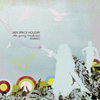 This collection of reworked versions of Marc Bianchi's 2003 albumincludes remixes that stay close to his original versions as well asadventurous deconstructions. By keeping the same running order as theoriginal LP, the set is much more listenable than many remix projects,as there is only one version of each track. By selecting a group ofremixers that are likeminded, he has ensured that the album won't straytoo far from various combinations of pop music and electronica. Thisworks to the advantage and disadvantage of the set. The Album Leaf doesaway with the chaotic beat programming of "The Young Machines" andinstead offers a pleasant, but ultimately uneventful melodic electronicversion. Arab Strap's take on "Something To Do With My Hands" is thebest example of a new version that keeps the structure of the originalsong intact, while improving upon its arrangement. The beat they haveused in place of the original's is simply much better, placing the songin a more contemporary setting. Interestingly, Arab Strap vocalistAidan Moffat has resisted the temptation to add his own vocals to thisremix, as he has done to others in the past. The Stereolab version of"Girl Problem" is the most deconstructed, recontextualized track of theset. It's hard to tell if they've used any sounds from the originaltrack at all. They have added what sounds like organ, drums, and allmanner of strange analog keyboard sounds, and in the process have madea better track than anything on their own last few albums. Thejuxtaposition of Bianchi's lyrics "I've got a girl problem; I've got adrug problem..." against this absurdist backdrop of bleeps and organbursts goes miles toward downplaying his often overly emotionalleanings. Super Furry Animals take on "Sleepy California" is a case inwhich a similar juxtaposition is less successful, as they have setdepressing lyrics about a dying grandmother to silly, bouncy music. Sixof the ten remixers have kept the original's vocals intact,highlighting the importance of storytelling in Her Space Holiday songs.To their credit, none of the remixers have used repeated vocalfragments, which are often annoying. Matmos and Blockhead havecompletely removed the vocals from their respective remixes of "TechRomance" and "Meet The Pressure." They both offer excellent, highlydeconstructed pieces based on a few elements from the original. Thebeautiful, weepy strings which Matmos have used as a key element intheir instrumental version of "Tech Romance" prove that Bianchi doesn'talways need to rely on direct lyrics to strike an emotional chord inhis listeners. While it may have been interesting to hear a few actsless familiar than these pop/electronica sympathizers try to remixtracks, it may have disrupted the flow of the album. By choosing areliable, if slightly conservative, group of remixers, this album hasturned out to be a highly enjoyable companion piece to The Young Machines.
This collection of reworked versions of Marc Bianchi's 2003 albumincludes remixes that stay close to his original versions as well asadventurous deconstructions. By keeping the same running order as theoriginal LP, the set is much more listenable than many remix projects,as there is only one version of each track. By selecting a group ofremixers that are likeminded, he has ensured that the album won't straytoo far from various combinations of pop music and electronica. Thisworks to the advantage and disadvantage of the set. The Album Leaf doesaway with the chaotic beat programming of "The Young Machines" andinstead offers a pleasant, but ultimately uneventful melodic electronicversion. Arab Strap's take on "Something To Do With My Hands" is thebest example of a new version that keeps the structure of the originalsong intact, while improving upon its arrangement. The beat they haveused in place of the original's is simply much better, placing the songin a more contemporary setting. Interestingly, Arab Strap vocalistAidan Moffat has resisted the temptation to add his own vocals to thisremix, as he has done to others in the past. The Stereolab version of"Girl Problem" is the most deconstructed, recontextualized track of theset. It's hard to tell if they've used any sounds from the originaltrack at all. They have added what sounds like organ, drums, and allmanner of strange analog keyboard sounds, and in the process have madea better track than anything on their own last few albums. Thejuxtaposition of Bianchi's lyrics "I've got a girl problem; I've got adrug problem..." against this absurdist backdrop of bleeps and organbursts goes miles toward downplaying his often overly emotionalleanings. Super Furry Animals take on "Sleepy California" is a case inwhich a similar juxtaposition is less successful, as they have setdepressing lyrics about a dying grandmother to silly, bouncy music. Sixof the ten remixers have kept the original's vocals intact,highlighting the importance of storytelling in Her Space Holiday songs.To their credit, none of the remixers have used repeated vocalfragments, which are often annoying. Matmos and Blockhead havecompletely removed the vocals from their respective remixes of "TechRomance" and "Meet The Pressure." They both offer excellent, highlydeconstructed pieces based on a few elements from the original. Thebeautiful, weepy strings which Matmos have used as a key element intheir instrumental version of "Tech Romance" prove that Bianchi doesn'talways need to rely on direct lyrics to strike an emotional chord inhis listeners. While it may have been interesting to hear a few actsless familiar than these pop/electronica sympathizers try to remixtracks, it may have disrupted the flow of the album. By choosing areliable, if slightly conservative, group of remixers, this album hasturned out to be a highly enjoyable companion piece to The Young Machines. Schumacher is an artist for whom the passage between sound installation, performance pieces, and isolated recorded works has been an increasingly fluid process. His first release since last year's lauded Room Pieces, Stories covers much of the same thematic ground, confusing concepts of atmospheric, incidental sound "events" with the markers of a scripted, real-time performance. Here, Schumacher's interest is an exploration of the narrative urges latent in musical composition and the expansion of these urges, as both the context in which a piece emerges, and the way a piece is constructed, are shown to be fragmented, multifarious.
Schumacher is an artist for whom the passage between sound installation, performance pieces, and isolated recorded works has been an increasingly fluid process. His first release since last year's lauded Room Pieces, Stories covers much of the same thematic ground, confusing concepts of atmospheric, incidental sound "events" with the markers of a scripted, real-time performance. Here, Schumacher's interest is an exploration of the narrative urges latent in musical composition and the expansion of these urges, as both the context in which a piece emerges, and the way a piece is constructed, are shown to be fragmented, multifarious. It's pretty much impossible these days to spit in any direction at aNorth American metal/hardcore festival and miss some band for whom AtThe Gates' Slaughter of the Soul forms the backbone of their sound.While a well-intentioned and, while being disturbingly over-rated,solid album, most of the unlistenable trash that has been spewed forthas melodic death metal over the past decade can be traced back to thisone blip on the musical landscape. Thankfully, the merry men in Arsishave emerged from four years of relative obscurity in Virginia spentcrafting their debut album and what could easily be considered thefirst melodic death masterpiece of the 21st century. Gone are theclich? that have plagued all but a handful of bands, for they have beenreplaced by this amazing razor sharp, ultra catchy, simply wonderfulcollection of tunes that will have even the most modest of peoplelonging to grow their hair out, throw up the horns, and have a greattime trying to keep up. Setting the pace right out of the gate with theferocious "The Face of My Innocence," it becomes immediately clear thatthis isn't your older brother's death metal, but something completelyoriginal and without equal on the modern metal landscape. There is notone single recycled riff, not one slightly uninteresting passage, notone second where you might doubt that you are hearing something thathasn't been done before with this type of precision and raw power. Theyeven manage to make the usually snore-inducing verse-chorus-verse songstructure work on "Maddening Disdain" with Malone tapping out a playfulmelody over drummer Michael VanDyne's ever-steady double bassonslaught. A true original toeing the line between vicious andmischievous with an authoritative expertise that concedes to neither,"A Celebration of Guilt" truly is the definition of essential.
It's pretty much impossible these days to spit in any direction at aNorth American metal/hardcore festival and miss some band for whom AtThe Gates' Slaughter of the Soul forms the backbone of their sound.While a well-intentioned and, while being disturbingly over-rated,solid album, most of the unlistenable trash that has been spewed forthas melodic death metal over the past decade can be traced back to thisone blip on the musical landscape. Thankfully, the merry men in Arsishave emerged from four years of relative obscurity in Virginia spentcrafting their debut album and what could easily be considered thefirst melodic death masterpiece of the 21st century. Gone are theclich? that have plagued all but a handful of bands, for they have beenreplaced by this amazing razor sharp, ultra catchy, simply wonderfulcollection of tunes that will have even the most modest of peoplelonging to grow their hair out, throw up the horns, and have a greattime trying to keep up. Setting the pace right out of the gate with theferocious "The Face of My Innocence," it becomes immediately clear thatthis isn't your older brother's death metal, but something completelyoriginal and without equal on the modern metal landscape. There is notone single recycled riff, not one slightly uninteresting passage, notone second where you might doubt that you are hearing something thathasn't been done before with this type of precision and raw power. Theyeven manage to make the usually snore-inducing verse-chorus-verse songstructure work on "Maddening Disdain" with Malone tapping out a playfulmelody over drummer Michael VanDyne's ever-steady double bassonslaught. A true original toeing the line between vicious andmischievous with an authoritative expertise that concedes to neither,"A Celebration of Guilt" truly is the definition of essential.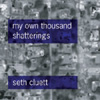 The title comes from poet and mescaline-prophet Henri Michaux; it is his vision of standing in a rainstorm, its persistent torrents, rather than enacting cleansing or comfort, are instead divisive, penetrating the body towards a thunderous disintegration. "I was, and was not, I was caught yet I was lost, I was in a state of complete ubiquity. The thousands upon thousands of rustlings were my own thousand shatterings." Three recordings make up sound artist Seth Cluett's own homage to rain, one a field recording taken during a storm, the preceding two consecutive reworkings of the resulting master tape. Cluett presents the three parts in "reverse" order: the first was created last as a reinterpretation or a remembering of the second, which was performed as a live manipulation of the original tape, a performance guided by the artist's recollections of the experience of recording the source material, presented unchanged in the third section.
The title comes from poet and mescaline-prophet Henri Michaux; it is his vision of standing in a rainstorm, its persistent torrents, rather than enacting cleansing or comfort, are instead divisive, penetrating the body towards a thunderous disintegration. "I was, and was not, I was caught yet I was lost, I was in a state of complete ubiquity. The thousands upon thousands of rustlings were my own thousand shatterings." Three recordings make up sound artist Seth Cluett's own homage to rain, one a field recording taken during a storm, the preceding two consecutive reworkings of the resulting master tape. Cluett presents the three parts in "reverse" order: the first was created last as a reinterpretation or a remembering of the second, which was performed as a live manipulation of the original tape, a performance guided by the artist's recollections of the experience of recording the source material, presented unchanged in the third section. The year 2004 might be remembered as the Year of Arthur Russell. Although the artist died of AIDS more than a decade ago, leaving behind a large and varied body of work, he lived and died in an unintelligible fog of near-total obscurity. Kicked off by The World of Arthur Russell, the Soul Jazz label's compilation of the artist's crucial disco productions, the year also saw the release of Calling Out of Context, the debut release for Audika Records, a label devoted to releasing Arthur Russell's works for posterity.
The year 2004 might be remembered as the Year of Arthur Russell. Although the artist died of AIDS more than a decade ago, leaving behind a large and varied body of work, he lived and died in an unintelligible fog of near-total obscurity. Kicked off by The World of Arthur Russell, the Soul Jazz label's compilation of the artist's crucial disco productions, the year also saw the release of Calling Out of Context, the debut release for Audika Records, a label devoted to releasing Arthur Russell's works for posterity. This album is a fine addition to the Hymen catalog. As the labeldoesn't issue new albums all the time, it is obvious that they areselective with regards to what they release. Having a high level ofstandards has paid off with Scatterheart,Benny Boysen's second release as Hecq. His sense of dynamics is a keyelement to his music's success. During "Doraccle" the shifts betweenloud and quiet are extreme, and help to sustain a level of tensionwithin the music. At 61 minutes the album is long, but the variety ofsounds and textures keeps the set interesting. The way Egyptianpercussion and pizzicato strings are used on "Flood Me" make it ahighlight of the album. His use of these unusual textures shows thathis influences are more varied than those of many electronic producers.Although Boysen is technically proficient at programming intricatebeats, he doesn't let the process become the focus of the music.Instead the set retains an emotional feel, although it often soundscold and mechanical. There is always an underlying drone or atmospherictexture that keeps the tracks grounded in human emotion. The openingtrack "FDK" begins with over a minute of droning, whirling tones beforethe beat kicks in. From this point on, the percussive patterns arejuxtaposed with the atmospheric elements. By focusing on one element orthe other, there is the possibility to listen with a different focuseach time. The inclusion of several short interludes consisting ofsampled dialogue also helps the set to retain a human quality. Thisseems to be a direct reference to the "skits" often featured betweenthe songs on hip hop albums. While many electronic acts talk of theinfluence hip hop has had on their work, Boysen has addressed thissubtly within the configuration of the album itself. The fact that thedialogue is from films also emphasizes Scatterheart's cinematicquality. Although there is a great amount of variance of sounds betweenthese tracks, they work well together as a whole and flow well into oneanother. Although there are many short tracks among the 23 featured,each seems to last long enough to effectively present an idea, withoutsounding unfinished. The running order is well organized, with "TBE,"the loudest, most chaotic track, placed at the halfway point. Thisshort track's noisy barrage of percussion balances the set perfectly.It's refreshing to find that although there are so many peopleproducing instrumental electronic music today, there is still thepossibility to create an album as fresh sounding as Scatterheart.
This album is a fine addition to the Hymen catalog. As the labeldoesn't issue new albums all the time, it is obvious that they areselective with regards to what they release. Having a high level ofstandards has paid off with Scatterheart,Benny Boysen's second release as Hecq. His sense of dynamics is a keyelement to his music's success. During "Doraccle" the shifts betweenloud and quiet are extreme, and help to sustain a level of tensionwithin the music. At 61 minutes the album is long, but the variety ofsounds and textures keeps the set interesting. The way Egyptianpercussion and pizzicato strings are used on "Flood Me" make it ahighlight of the album. His use of these unusual textures shows thathis influences are more varied than those of many electronic producers.Although Boysen is technically proficient at programming intricatebeats, he doesn't let the process become the focus of the music.Instead the set retains an emotional feel, although it often soundscold and mechanical. There is always an underlying drone or atmospherictexture that keeps the tracks grounded in human emotion. The openingtrack "FDK" begins with over a minute of droning, whirling tones beforethe beat kicks in. From this point on, the percussive patterns arejuxtaposed with the atmospheric elements. By focusing on one element orthe other, there is the possibility to listen with a different focuseach time. The inclusion of several short interludes consisting ofsampled dialogue also helps the set to retain a human quality. Thisseems to be a direct reference to the "skits" often featured betweenthe songs on hip hop albums. While many electronic acts talk of theinfluence hip hop has had on their work, Boysen has addressed thissubtly within the configuration of the album itself. The fact that thedialogue is from films also emphasizes Scatterheart's cinematicquality. Although there is a great amount of variance of sounds betweenthese tracks, they work well together as a whole and flow well into oneanother. Although there are many short tracks among the 23 featured,each seems to last long enough to effectively present an idea, withoutsounding unfinished. The running order is well organized, with "TBE,"the loudest, most chaotic track, placed at the halfway point. Thisshort track's noisy barrage of percussion balances the set perfectly.It's refreshing to find that although there are so many peopleproducing instrumental electronic music today, there is still thepossibility to create an album as fresh sounding as Scatterheart.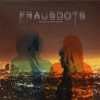 When I first looked at the cover of this CD and the title, my immediatethought was "Please kill me at this very moment and save me from themusic inside, as it's bound to be incredibly pretentious LA glam popwith a European slant, and I can't stand any more of that. Thank you,whoever hears." I'm glad to say I wasn't entirely right, but there areelements of truth to it, and therefore the record surprised me, thoughultimately I did not like it much. Brent Rademaker (Further/BeachwoodSparks) and Michelle Loiselle have a clear knack for pop songs andmelodies, but they seem rather big on glitz and appearance as the linernotes show. This can be an indication of a band without much substance,and the beginning of the record almost reflects that. "Dead Wrong"opens with a slight rephrasing of "Horse With No Name" in a faux GaryNuman delivery. Then, something shocking happens, as the verse hashorrible lyrics, but the chorus takes orbit and firmly finds its placeamong the stars ("Now everybody's doing everybody wrong, andeverybody's singing everybody else's song"). So, in a way, it's anironic parody that opens the record, and that's a bit acceptable, butthe lyrics are still lackluster, and the overall aesthetic seemsborrowed, as well. Plus, the song goes on 45 seconds longer than itshould, into a "doo doo doo" breakdown that is more doo doo. Still, theconcept delivers a benefit of doubt response, and a hope that othersongs will improve it. Sadly, no. "Fashion Death Trends" is where thealbum gets its insidious title, and seems to be about changingattitudes with clothes, and has lyrics in places like "Hello HelloHello" and "Goodbye Goodbye Goodbye." Other songs have promise, withbetter lyrics and more variation, like "The Extremists" and "SoftLight." Then "A Go-see" comes and destroys the momentum. Basically, itdoesn't get anywhere, and it does it real quick. It's derivative, butit has promise; so that's at least one positive thing.
When I first looked at the cover of this CD and the title, my immediatethought was "Please kill me at this very moment and save me from themusic inside, as it's bound to be incredibly pretentious LA glam popwith a European slant, and I can't stand any more of that. Thank you,whoever hears." I'm glad to say I wasn't entirely right, but there areelements of truth to it, and therefore the record surprised me, thoughultimately I did not like it much. Brent Rademaker (Further/BeachwoodSparks) and Michelle Loiselle have a clear knack for pop songs andmelodies, but they seem rather big on glitz and appearance as the linernotes show. This can be an indication of a band without much substance,and the beginning of the record almost reflects that. "Dead Wrong"opens with a slight rephrasing of "Horse With No Name" in a faux GaryNuman delivery. Then, something shocking happens, as the verse hashorrible lyrics, but the chorus takes orbit and firmly finds its placeamong the stars ("Now everybody's doing everybody wrong, andeverybody's singing everybody else's song"). So, in a way, it's anironic parody that opens the record, and that's a bit acceptable, butthe lyrics are still lackluster, and the overall aesthetic seemsborrowed, as well. Plus, the song goes on 45 seconds longer than itshould, into a "doo doo doo" breakdown that is more doo doo. Still, theconcept delivers a benefit of doubt response, and a hope that othersongs will improve it. Sadly, no. "Fashion Death Trends" is where thealbum gets its insidious title, and seems to be about changingattitudes with clothes, and has lyrics in places like "Hello HelloHello" and "Goodbye Goodbye Goodbye." Other songs have promise, withbetter lyrics and more variation, like "The Extremists" and "SoftLight." Then "A Go-see" comes and destroys the momentum. Basically, itdoesn't get anywhere, and it does it real quick. It's derivative, butit has promise; so that's at least one positive thing. On this double CD, their third release, Jesse Poe's Tanakh have abandoned songwriting and shifted their attention to creating dark atmospheric soundscapes. Seven musicians contribute to the project, including Pat Best, who must have felt right at home here, as the shifting drones sometimes recall his work with Pelt. The music sounds very much a product of the cavernous temple in which it was recorded.
On this double CD, their third release, Jesse Poe's Tanakh have abandoned songwriting and shifted their attention to creating dark atmospheric soundscapes. Seven musicians contribute to the project, including Pat Best, who must have felt right at home here, as the shifting drones sometimes recall his work with Pelt. The music sounds very much a product of the cavernous temple in which it was recorded.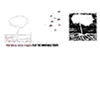 When a band concocts a formula that is not easily classifiable and isalmost indecipherable at times yet is complete compelling and causeslong periods of not wanting to turn the repeat function off on the CDplayer, they are to be congratulated. Infectious, sinewy, ever-morphingand pulsing with energy almost describe any music from the Berg SansNipple, but these songs are particularly demonstrative of theircreative abilities. The quiet chimes that start the proceedings arequickly augmented by beefy hip hop drums and falsetto vocals that areunrecognizable and cut up jitter-style as the need arises. Low keys arejoined by high squelches and a lovely chimes breakdown, and the trackdrives on with the sinister underbelly of a corrupt afterlife. Perfectsounds for Purgatory, hence the track's title, and just when it seemslike it's all over the wattage increases to 150% for the last twominutes. Then horns break the darkness open and usher in the holinessof "Hark, the Poonie Angel Sings!" Processed vocals mixed with keyscreate an eerie choir from the beyond, and tainted breathy whispersinfect like the dream passages of REM sleep. The track does notoverstay its welcome, luckily, though I found it puzzling that theangels get less say than the poor souls in Purgatory; maybe they'rejust less interesting. "Swordfighting" is a bit crunchier, with a noirbackdrop, much like the theme music for a man on a revenge streak,searching out the next person in the group who ratted him out. The sameghostly choir is present, like the souls to be redeemed egging on theevil work to be done. At four minutes it is a bit repetitious, but notoverbearingly so. The CD closes with the more experimental and quietpulsing of "Memory Hole," and in just twenty minutes the group hasraised hairs and slicked them back, applying a relaxing massage rightat the end. It's a gamut to be run, and they pass without incident.
When a band concocts a formula that is not easily classifiable and isalmost indecipherable at times yet is complete compelling and causeslong periods of not wanting to turn the repeat function off on the CDplayer, they are to be congratulated. Infectious, sinewy, ever-morphingand pulsing with energy almost describe any music from the Berg SansNipple, but these songs are particularly demonstrative of theircreative abilities. The quiet chimes that start the proceedings arequickly augmented by beefy hip hop drums and falsetto vocals that areunrecognizable and cut up jitter-style as the need arises. Low keys arejoined by high squelches and a lovely chimes breakdown, and the trackdrives on with the sinister underbelly of a corrupt afterlife. Perfectsounds for Purgatory, hence the track's title, and just when it seemslike it's all over the wattage increases to 150% for the last twominutes. Then horns break the darkness open and usher in the holinessof "Hark, the Poonie Angel Sings!" Processed vocals mixed with keyscreate an eerie choir from the beyond, and tainted breathy whispersinfect like the dream passages of REM sleep. The track does notoverstay its welcome, luckily, though I found it puzzling that theangels get less say than the poor souls in Purgatory; maybe they'rejust less interesting. "Swordfighting" is a bit crunchier, with a noirbackdrop, much like the theme music for a man on a revenge streak,searching out the next person in the group who ratted him out. The sameghostly choir is present, like the souls to be redeemed egging on theevil work to be done. At four minutes it is a bit repetitious, but notoverbearingly so. The CD closes with the more experimental and quietpulsing of "Memory Hole," and in just twenty minutes the group hasraised hairs and slicked them back, applying a relaxing massage rightat the end. It's a gamut to be run, and they pass without incident.  Nagisa Ni Te is primarily the work of Shinji Shibayama and his partnerand muse Masako Takeda. Over the course of four albums, the Japanesepsych-folk duo has carved out their own niche among their moreavant-leaning Japanese contemporaries, creating subtle and lovely popmusic that floats by like a gentle summer breeze. Their name, whichmeans "On the Beach" in Japanese, seems to be a direct reference toNeil Young's classic album of the same name, and they do seem to takesome musical inspiration from Young as well. Though their music at timeseems minimal and unadorned, there is a deceptive simplicity at work intheir arrangements. A wide range of instruments is used, as well asgenius multi-tracked vocal harmonies, but always in a refreshinglyuncomplicated way that never seems too calculated. Their chief subjectis nature, and love of the same, as evidenced by the included lyrics,given an English translation by The Wire's resident Japanophile Alan Cummings. The Same As a Flowerevokes the pastoral simplicity of nature in understated surrealistterms, where the sky is "tall as a flower," "brambles taste sweet" andthe sky is "shattered by fish." The album seems to be the duo's mostgelled statement thus far, full of beautiful melodies that etchedthemselves into my brain quite naturally after only a few listens. Theopening title track has a catchy chorus and a catchier melody, a simplesweet duet about the contemplation of a flower. Though Nagisa Ni Te'sprogressive tendencies and eclectic influences seem often to suggestIncredible String Band or other 60s acts, their consistentlyuncluttered arrangements put them closer in style to Belle andSebastian, without the twee affectation. Using only an electric guitarand evocative vocal overdubbing, "River" is able to hauntingly evokethe gentle currents and eddies of the song's namesake. "Wife" is aninstrumental intermission that recalls George Harrison's solo work, orthe Beach Boys' "Fall Breaks and Back to Winter." "Bramble" floats byat a leisurely pace for 11 minutes, ending with a hypnotic guitar andmellotron duet. It's organically psychedelic without resorting to thetired repertoire of studio gimmickry that characterizes most modernpsych. Truly, the album is lighter than air, and constantly threatensto float away like so many dandelion spores. But while it's stilltangible, it's as lovely and uncluttered as any psych album you'relikely to hear all year.
Nagisa Ni Te is primarily the work of Shinji Shibayama and his partnerand muse Masako Takeda. Over the course of four albums, the Japanesepsych-folk duo has carved out their own niche among their moreavant-leaning Japanese contemporaries, creating subtle and lovely popmusic that floats by like a gentle summer breeze. Their name, whichmeans "On the Beach" in Japanese, seems to be a direct reference toNeil Young's classic album of the same name, and they do seem to takesome musical inspiration from Young as well. Though their music at timeseems minimal and unadorned, there is a deceptive simplicity at work intheir arrangements. A wide range of instruments is used, as well asgenius multi-tracked vocal harmonies, but always in a refreshinglyuncomplicated way that never seems too calculated. Their chief subjectis nature, and love of the same, as evidenced by the included lyrics,given an English translation by The Wire's resident Japanophile Alan Cummings. The Same As a Flowerevokes the pastoral simplicity of nature in understated surrealistterms, where the sky is "tall as a flower," "brambles taste sweet" andthe sky is "shattered by fish." The album seems to be the duo's mostgelled statement thus far, full of beautiful melodies that etchedthemselves into my brain quite naturally after only a few listens. Theopening title track has a catchy chorus and a catchier melody, a simplesweet duet about the contemplation of a flower. Though Nagisa Ni Te'sprogressive tendencies and eclectic influences seem often to suggestIncredible String Band or other 60s acts, their consistentlyuncluttered arrangements put them closer in style to Belle andSebastian, without the twee affectation. Using only an electric guitarand evocative vocal overdubbing, "River" is able to hauntingly evokethe gentle currents and eddies of the song's namesake. "Wife" is aninstrumental intermission that recalls George Harrison's solo work, orthe Beach Boys' "Fall Breaks and Back to Winter." "Bramble" floats byat a leisurely pace for 11 minutes, ending with a hypnotic guitar andmellotron duet. It's organically psychedelic without resorting to thetired repertoire of studio gimmickry that characterizes most modernpsych. Truly, the album is lighter than air, and constantly threatensto float away like so many dandelion spores. But while it's stilltangible, it's as lovely and uncluttered as any psych album you'relikely to hear all year. 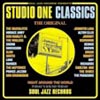 On the 4th of May this year Clement "Sir Coxsone" Dodd died. He is oneof the most important figures in the history of reggae music; he openedand ran the now famous Studio One recording facility in Kingston, waspresent and perhaps partially responsible for many of the stylisticdevelopments within reggae, and put out some of the first records fromsuch individuals as the Heptones, Burning Spear, and the Wailers."Studio One Classics" collects 18 tracks from 1964 to 1981 and itclearly demonstrates the brilliance, depth, and soul of reggae and allits variations. Carlton and the Shoes of 1968 are placed next to theHeptones of 1978 and the Wailers from 1965 are heard next to tracksfrom Sugar Minott and Lone Ranger from 1980 and 1981; while the styleschange and shift from track to track and attitudes slip from relaxed topoppin' and feverish, what this compilation makes so evident is thatthere is more heart and love in these tracks than any dancehall orR&B performer today could ever hope to touch on. Hearing DennisBrown perform "No Man Is an Island" or Sound Dimension bleed "RockfortRock" is like a slap to the face because its thatmuch better than anything that's been thrown onto the radio ortelevision screen. And while I can appreciate Bob Marley, listening theWailers bop through "Simmer Down" makes me wonder why this part of hiscareer hasn't received more attention than anything else. Every lasttrack feels fresh, too, with songs like "Rougher Yet" and "Pretty LooksIsn't All" exhibiting all the sounds and feelings that a large numberof future dub, reggae, soul, and jazz lovers would emulate and developout of. This is an excellent set of songs from one of the mostimportant, if not the most important, studios in all of reggae.The beginning of every change in reggae history can be heard here andat the top of its form - it simply doesn't get much better than this.If only Prince Far I and Toots and the Maytals had been includede onthis compilation, then it could have been perfect.
On the 4th of May this year Clement "Sir Coxsone" Dodd died. He is oneof the most important figures in the history of reggae music; he openedand ran the now famous Studio One recording facility in Kingston, waspresent and perhaps partially responsible for many of the stylisticdevelopments within reggae, and put out some of the first records fromsuch individuals as the Heptones, Burning Spear, and the Wailers."Studio One Classics" collects 18 tracks from 1964 to 1981 and itclearly demonstrates the brilliance, depth, and soul of reggae and allits variations. Carlton and the Shoes of 1968 are placed next to theHeptones of 1978 and the Wailers from 1965 are heard next to tracksfrom Sugar Minott and Lone Ranger from 1980 and 1981; while the styleschange and shift from track to track and attitudes slip from relaxed topoppin' and feverish, what this compilation makes so evident is thatthere is more heart and love in these tracks than any dancehall orR&B performer today could ever hope to touch on. Hearing DennisBrown perform "No Man Is an Island" or Sound Dimension bleed "RockfortRock" is like a slap to the face because its thatmuch better than anything that's been thrown onto the radio ortelevision screen. And while I can appreciate Bob Marley, listening theWailers bop through "Simmer Down" makes me wonder why this part of hiscareer hasn't received more attention than anything else. Every lasttrack feels fresh, too, with songs like "Rougher Yet" and "Pretty LooksIsn't All" exhibiting all the sounds and feelings that a large numberof future dub, reggae, soul, and jazz lovers would emulate and developout of. This is an excellent set of songs from one of the mostimportant, if not the most important, studios in all of reggae.The beginning of every change in reggae history can be heard here andat the top of its form - it simply doesn't get much better than this.If only Prince Far I and Toots and the Maytals had been includede onthis compilation, then it could have been perfect. 
